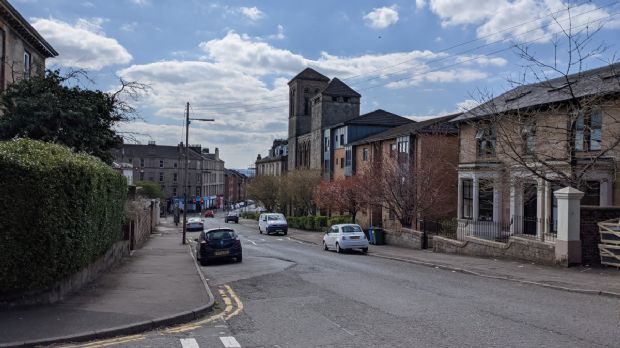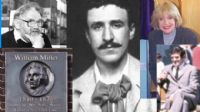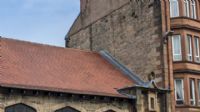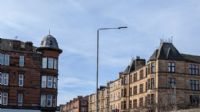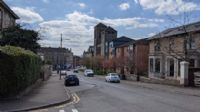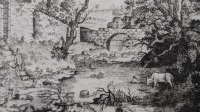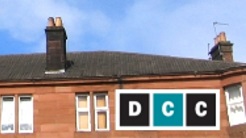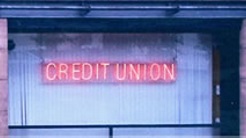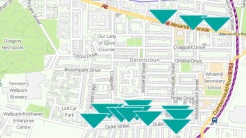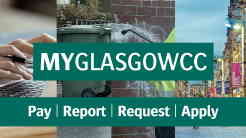Dennistoun and the Surrounding Area in the East End of Glasgow, Scotland
The History
St. Mungo, Glasgow's patron saint, arrived on the banks of the Molendinar burn in 543AD and Glasgow was born. The Molendinar flows through Dennistoun and winds its way past this old part of Glasgow on its way to the River Clyde. Not far from these banks William Wallace defeated the English at the battle of the Bell O' The Brae in 1272AD.
The residential area of Dennistoun originated from an idea by Alexander Dennistoun who was aware of the successes of his neighbour John Reid who built dwellings to the south of Duke Street. Alexander came from a wealthy merchant family. His father James Dennistoun purchased the estate of Golfhill from the trustees of Jonathan Anderson in 1814 and built his family mansion there. On the death of his father in 1835 Alexander took up residence at Golfhill and became director of the Union Bank of Scotland. In 1856 having purchased the other estates in the area, he used the services of local architect James Salmon to express his ideas of quality houses in a modern setting. He named this highly desirable area after his own family name and his ideas came to fruition in the streets of Westercraigs, Craigpark and the connecting terraces.
Dennistoun was originally drawn up to have good quality detached and semi-detached villas that stood in their own grounds. However it was short-lived, Alexander died in 1874 and when work resumed the plans changed to accommodate the demand for what has now become Glasgow's traditional sandstone tenement.
The Place
The Dennistoun catchment area includes the suburbs of Milnbank, Reidvale, Wellpark, Haghill, Drygate and Ladywell and lies between the M8 motorway in the north to the rail line south of Duke Street and extends from the High Street in the west to Todd Street/Provan Road in the east.
It is an attractive and popular place to live in Glasgow's East End. It offers a variety of inner-city housing types, the majority being tenemental. The once sub-standard Victorian tenement housing in Dennistoun, Haghill and Reidvale has been revitalised by Reidvale and Milnbank Housing Associations. There are multi-storey blocks in the Bluevale, Whitevale and Drygate areas. It has a conservation designated area of Victorian villas and there is presently continual developments of new property.
This mix of tenure proves popular with people of all ages. The young are particularly attracted to the reasonably priced city tenement flats as they enter the housing market for the first time. Housing associations are also conscious of the need to keep rents at an affordable level as they have a higher proportion of tenants who are working compared to other housing associations in Glasgow. The housing associations also provide special needs housing for the elderly and other community care facilities.
This diversity along with the Necropolis, Cathedral Square, Alexandra Park and the two main arterial shopping streets of Duke Street and Alexandra Parade contribute to its character. It is close to the city centre and has easy access to schools, jobs, shops and entertainment. It also has slip-roads onto the M8 and M80 motorways and is well served by public transport.
Shopping for the area is provided byAlexandra Parade (north), Duke Street (south), an Indoor ShoppingCentre and Retail Park (southeast) and the city centre (west) which iswithin a 5-minute journey by public transport.
Leisure and recreation is provided forby means of a sports centre, sports hall, snooker club, footballgrounds, various community halls, public swimming pool, golf course,bowling greens, branch library, toddlers play area and open amenityspace areas including one of the largest parks in the city.
The People
The area has a population of 23000 being mostly white with a small ethnic minority of Asian and Chinese living in some 8000 homes. In general terms half the housing stock is owner-occupied, and half is rented accommodation controlled by local housing associations, however, there is an increasing number (500 approx.) of privately rented accommodation catering for, amongst others, a growing student population.
Just under half the population are employed (10000) with an unemployed rate on a par with the rest of Glasgow. There are three industrial sites (Townmill, Wellpark and Glenpark), two major employers; British Bakeries (bread) & Tennants Caledonian Breweries (beer), various shops; Duke Street & Alexandra Parade/Cumbernauld Road, the largest office development in Scotland (City Park) with the capacity for up to 3,000 employees and schools; 4 primary, 1 secondary & 1 specialised education centre.
